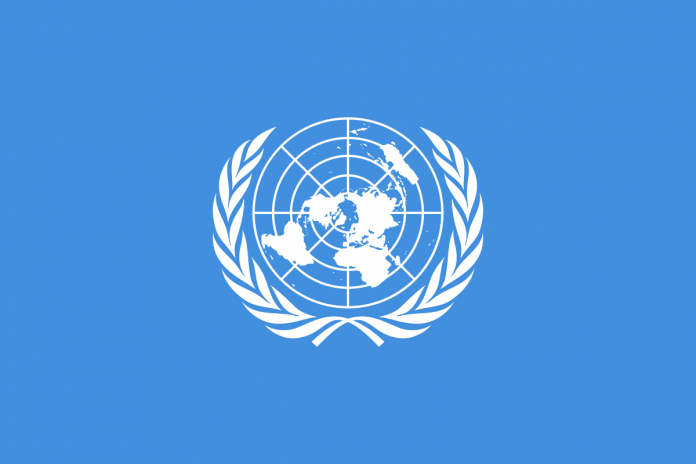This article is written by Ridhi Mittal, a student of Symbiosis Law School, Noida. This article talks about the United Nations Agenda of 2030, and what all was talked about and decided through this Agenda.
Table of Contents
Introduction
The United Nations is an organization to maintain global peace and security and develop friendly relations among nations, international cooperation, promoting social progress, establishing better living standards, and exercising human rights. It helps the nations to work together and improve the lives of poor people and provide as many people as possible with basic amenities namely food, shelter, clothing, education, and health facilities. When we talk about the UN Agenda, we are broadly talking about a plan of action for the betterment of the people, the planet and prosperity. It looks up to strengthening universal peace in attaining greater freedom. The greatest global change, recognised by the people, is poverty. Eradicating poverty in all forms and dimensions can be done through sustainable development.
Call for action to change our world
After World War II, nearly 70 years ago, the United Nations was established by the states to ensure peace and international cooperation. This organization is looked upon to resolve inter-state disputes between different countries and build a future that is good for all. It was thought that if the 2030 Agenda becomes successful, poverty might be eradicated as the current generation has the power to save the planet. Through this Agenda, the plan to save the planet in the next 15 years has been announced. The new goals, mentioned by the UN 2030 Agenda, allow the people of the world to channel their infinite capacities for activism into the creation of a better world. “We the people” mentioned in the Charter of the United Nations, will embark on the journey to the 2030 Agenda. It involves the Parliament, Government, and other international institutions as well as the local authorities. Humanity’s future lies in the hands of the people, that is, the younger generation, who are the torch bearers of the future. The road to sustainable development is being mapped and now it is the people on the planet who have to make the journey a successful one.
Sustainable development goals as per the 2030 Agenda
To achieve the long-term goal of sustainable development, the United Nations has divided the aim into seventeen short-term goals. These seventeen short term goals are listed below:
Poverty
The first goal is to eliminate poverty. The mission statement for the same is, “End poverty in all its forms everywhere.” Poverty is something that can go up to many extents like unemployment, social exclusion, diseases, and vulnerability of a certain population. Even if the economy of a country rises but the growth is unequal among different sections of society, it results in social cohesion, increase in political tensions, instability, and conflicts. It is an understandable fact that large family sizes and poverty go hand in hand. A high fertility rate traps a country in poverty. For the same reason, the World Bank has warned that poverty will not decrease in 2021. This Agenda is about reaching out to everyone, no matter how further and deprived they are, and ensuring that no one is left behind.
Hunger
The second goal is to erase hunger. The mission statement says, “Universal access to safe and nutritious food.” This aims at ending hunger and ensuring access to food and nutrition by all people around the globe, throughout the year. The calorie requirement, given by the World Resource Institute, of the population as a whole is 10 billion, is 56 percent more than the current total crop production. To accomplish this target, the United Nations has come up with creating sustainable food systems, which means providing security of food and nutrition to everyone in a manner that does not compromise the economic, social, and environmental bases to generate food security and nutrition for future generations. Secondly, small-scale producers also hold the power to bring change in this field. Ending rural poverty will help them increase their incomes and improve their well-being. Another significant way to promote zero hunger is minimizing food loss. Food can be produced according to the consumer’s or retailer’s choice. In addition to this, malnutrition is an outcome of poverty and hunger. Stunting refers to the impaired growth and development that a child faces due to improper nutrition. Ensuring access to food with proper nutritional value at the start of pregnancy, till the child’s second birthday is a measure by The United Nations to avoid stunting.
Health
Establishing good health and well-being is the third goal for achieving SDG 2030. A very high proportion of the total population becomes the prey of diseases due to lack of awareness and unavailability of resources. The public healthcare sectors which are already overburdened fail to provide effective and efficient health services to people. For instance, lack of access to modern contraception and medically safe abortions lead to unwanted pregnancies and preventable maternal deaths. The rate of women dying due to pregnancy complications is very high. So, investing in healthcare and spreading awareness about the same, including access to family planning, helps control the problem of overpopulation and bring improvement in the lives of people. Moreover, the United Nations monitors factors like air quality and traffic. It aspired for well-being for all and has committed to ending the epidemics of AIDS, malaria, and other communicable diseases by 2030.
Education
Further pursuing the objective of sustainable development, the UN, in the 2030 Agenda, has included a good quality education for everyone and it also promotes the concept of lifelong learning. Greater investment in quality education programs is the key to alleviate poverty. Mainly, sustainable education encompasses all school subjects to extend far beyond the classroom like knowledge about real-world skills which can contribute towards improving the planet. The motto is to provide children with the self-sufficiency they need for tomorrow. Worldwide, over a hundred million youth lack basic literacy skills, and most of them are females. It is UNESCO who is responsible for coordinating with the international community to achieve this goal through partnerships, policy guidance, capacity development, monitoring, and advocacy.
Gender equality
Gender equality by 2030 requires actions to eliminate the root causes of discrimination. According to the observations by the authorities, the commitment has brought improvements in a few areas but all the legal, social, economic barriers to the empowerment of the victims, including digital empowerment are still desirable.
Hygiene
The sixth goal of SDG UN 2030 is improving clean water and sanitization. The goals address water scarcity, poor water quality, and inadequate sanitation. 2.2 billion people around the world lack safe drinking water and 4.2 billion lack sanitation services. Water and sanitation-related diseases are amongst the major causes of death in children under the age of five. At present, the count of children dying from diarrhoeal diseases linked to poor hygiene is more than 800 children each day. By managing these aspects, we will also be able to manage the production of food and energy and contribute to economic growth.
Energy
Growing affordable and clean energy is the next goal. This involves investing in energy sources such as solar, wind, and thermal as they are clean. Global energy demand is expected to be increased by 50 percent in the next 30 years which will be the result of population growth and economic development. Expanding infrastructure and upgrading technology to provide clean and more efficient energy in all countries is a way to encourage growth and development which will also be helping the environment. High-income countries shall lead the way in transitioning to clean fuels and also in order to support the low-income countries to do the same. The number of people relying on polluting fuels and technology is great in number, reaching an estimate of 3 billion people.
Economic Growth
To carry out the SDG 2030 goal further, the UN has come up with the idea of creating decent work and economic growth. Here, the main focus is to support development-oriented policies, decent job creation, entrepreneurship, creativity, and innovation. They also encourage the formalization and growth of micro, small, and medium-scale organizations. It reaffirms the relationship between economic and social policies and their significance in support of full employment and decent work. This goal is significant as a large number of dependable youth makes it impossible for the economy to rise. To ensure decent work, the UN will be taking effective measures to remove unwanted or forced labour and abolish child labour completely.
Infrastructure
Goal 9 targets increasing industry, innovation, and infrastructure. This seeks to build a strong infrastructure, promote inclusive and sustainable industrialization, and foster innovation which could uplift the economy, creating job opportunities and eventually leading to demolishing poverty. Similar to SDG 8, this goal encourages start-up culture as well in developing countries. Up-gradation in these three areas will also increase resource-usage efficiency.
Inequality reduction
The tenth goal is reducing inequality within and among countries. Inequality among countries due to various reasons is a persistent cause of concern. Even though there have been some positive signs for the same, yet in some dimensions like relative income and trade status, it still prevails. It is also deepening in countries with vulnerable populations, weaker health systems, and humanitarian crises. Senior citizens disabled, special people, indigenous people, refugees, and migrants are at the highest risk of being left behind. Resources being distributed among people equitably are very essential for reaching the aim of sustainable development
Planned cities
The further goal is to mobilize sustainable cities and communities. SDG 11 aims to renew and plan cities and other human settlements so that it offers opportunities to everyone along with necessities. Urban communities have more than half the world’s population living in them, which is expected to rise to 68 percent by 2050. This can lead to outstripping of clean water, sanitation, health, jobs, and education that can be offered. The main target of the particular goal is to invest in public transport, creating green public spaces, improving urban planning and management.
Consumption
Goal 12 of SDG 2030 ensures responsible and sustainable production and consumption. Climate change is led by greenhouse emissions which are further seen due to the inefficient human consumption of food, energy, and other goods and services. Each year an estimate of one-third of the total food produced, which is about 1.3 billion tonnes worth around $1 trillion, ends up rotting and gets wasted due to poor transportation and harvesting practices. Also, switching to energy-efficient light bulbs from the other ordinary ones would save a lot of money annually in the world. Sustainable consumption and production are about doing more and better with less, decoupling economic growth from environmental degradation, increasing resource efficiency, and promoting sustainable lifestyles. It can also contribute towards poverty alleviation and transition towards low carbon and green economy. Consumption can be reduced in three primary ways:
- Shifting from higher-emitting to lower-emitting items in terms of basket of goods and services consumed.
- Reducing the overall rate of economic growth
- Reducing the rate of population growth.
Climatic actions
The official thirteenth goal of SDG 2030 talks about taking urgent action in order to combat climate change and its impact. Five critical climate actions that can be taken are:
- Reduce wastage of food- As mentioned above in goal 12, one-third of the food we cultivate ends up in the garbage. To think about water, capital, labor, and land along with the greenhouse gases contributed towards the production is a lot of wastage.
- Educate girls- Women empowerment leads to better incomes and independence. Maternal and infant mortality rate is low among educated women, and so is the incidence of HIV/AIDS. It will also help women respond better to climate shocks.
- Eat a plant-rich diet- According to the project Drawdown, if there was a whole nation of cattle, it would be the world’s third-largest emitter of greenhouse gases.
- Conserve tropical forests- The Rainforest Alliance has worked to protect existing forests and restore degraded and deforested land. The goal is to train farmers around the world in climate-smart and sustainable methods.
Water bodies
Developing life below water is a very significant objective. The conservation and sustainable use of oceans, seas, and marine resources play a huge role in sustainable development. Healthy water bodies are essential for our existence. We must protect them by taking certain measures like eliminating water pollution, reducing the amount of excess fishing and also managing and protecting the life existing in marine bodies with immediate effect in the world. Human activities have damaged two-third of the marine areas and also lead reef corals to extinction. A third of sharks and rays are also endangered by the existing human activities.
Land
The fifteenth goal of SDG 2030 is life on land. Human population growth is one of the main causes of biodiversity loss. We have lost about 60 percent of all vertebrate wildlife populations since 1970. The mission statement is, “Protect, restore and promote sustainable use of terrestrial ecosystems, sustainably manage forests, combat desertification, and halt and reverse land degradation and halt biodiversity loss.” The 2019 UN assessment of the landmark stated, “Changes to the direct drivers of natural deterioration cannot be achieved without transformative change that simultaneously addresses the indirect drivers.”
Partnership
Overall, cross-sectoral partnerships that recognize the crucial links between social and environmental issues are the key to a better future. Partnership for the goals is very important to make this Agenda come true. Without unity, it will not be possible. The international community must foster recognition of the urgent need to end human population growth as soon as it is ethically possible and promote greater investment in powering solutions. It is said that all countries and all stakeholders, acting in collaborative partnership, will implement this plan. This plan is for taking the bold and transformative steps which are urgently needed to shift the world on to a sustainable and resilient path.
Means of implementation
A strong commitment to the implementation of the above-stated goals is to be ensured. Global Partnership is very essential to successfully implement the Sustainable Development Goals. It is because the Global Partnership will facilitate the intensive global engagement for supporting the implementation of the goals. It brings together the Government, citizens of the world, including the public and private sectors. The implementation of each and every one of the 17 goals given by the UN Agenda is equally important for a society or a nation to grow in a true and real sense and not just in one aspect. Every goal shall be given equal priority and importance to ensure a successful journey. The Addis Ababa Action Agenda supports, complements, and helps to contextualize the 2030 Agenda’s means of implementation targets. The domestic public resources and domestic and international private business are also included in the same. The finance, international development cooperation, international trade which is used as the engine for development, debt and debt sustainability, addressing systemic issues and science, technology, innovation and capacity-building, and data, monitoring, and follow-up is also included. Middle-income countries face significant challenges to achieve sustainable development. It is central to our common pursuit in terms of sustainable development which also includes achievement of the sustainable development goals and an effective use of domestic resources. All the countries and their public policies are underscored by the principle of national ownership. Economic growth is the reason and source for the generation of domestic resources which is further supported by an enabling environment at all levels. The sustainable development goals and targets, also including the means of implementation are universal, interlinked and indivisible.
Follow-up and review
A review system for the correct implementation of the Agenda will be maintained for the next 15 years. A vital contribution to implementation will be a voluntary, effective, transparent, integrated and participatory follow-up and review system. This will help the countries in maximising and tracking progress of the implementation of the UN 2030 Agenda in order to ensure that no one is left behind. Accountability will be promoted amongst the citizens because it is operational at the national, regional, and global levels. It will ensure effective international cooperation in achieving the Agenda and will also support mutual learning. A course of mutual trust and understanding is of the top-most priority as this will be a universal Agenda. Certain principles are there that will guide the middle-income groups in follow-up and review processes at all levels. These principles are listed below:
- These principles are voluntary for each country to follow and do not mandate any particular country. Different national realities, capacities and levels of development are taken into account. It respects the policies and priorities of each country. For achieving sustainable development, national ownership is the key, the foundation for reviews at regional as well as global levels will be from the outcome of national level processes. National official data sources will be the primary basis of the global review.
- Through the principles, the progress of implementation of the universal goals and targets will be tracked. It will also include the means of implementation in all countries in a way that respects their universal, integrated, as well as interrelated nature and also the three dimensions of sustainable development.
- A long-term orientation, identifying middle-income achievements Middle-income, challenges, gaps, and critical success factors, and supporting countries in making informed policy choices will be maintained. The mobilization of the necessary means of implementation and partnerships will be supported by them. Also, the identification of solutions and practices in order to promote the coordination and effectiveness of the international development system will be supported as well.
- These principles and goals will be open, inclusive, participatory, and transparent for everyone and all relevant stakeholders will support reporting.
- They will be open to all and inclusive, participatory, and transparent for all the people and will also support reporting by all relevant stakeholders.
- They will be seen as people-centred, gender-sensitive, in respect of human rights, and have a particular focus on the poorest, most vulnerable, and those furthest behind.
- It is said that these principles will build on existing platforms and processes and avoid any kind of duplication. They will also respond to the national circumstances, capacities, needs, and priorities. They will also evolve and take into account the emerging issues and the development of new methodologies, and will minimize the reporting burden on national administrations.
- They will be based on evidence. Informed by the country-led evaluations and data, which is high-quality, accessible, timely, reliable, and disaggregated by income, sex, age, race, ethnicity, migration status, disability, and geographic location, and all the other characteristics that are relevant in the national contexts.
- A need for enhanced capacity-building support for developing countries, including the strengthening of national data systems and evaluation programs, particularly in African countries, least developed countries, small island developing States, landlocked developing countries, and middle-income countries, is required.
- The active support of the United Nations system and other multilateral institutions will provide the benefit these principles need.
Global indicators will be used to keep a follow-up and review system on the following goals and targets. Regional and national level indicators, developed by the member states, will complement them in addition to the outcomes of the work that is undertaken for the baselines developments for those targets where national and global baseline data does not yet exist. Participation in follow-up and review processes will be supported by the high level political forums. These processes are by the major groups and other relevant stakeholders. The importance of system-wide strategic planning, implementation, and reporting to ensure coherent and integrated support to the implementation of the new Agenda by the United Nations development system is also stressed upon.
India’s role in attaining SDG 2030
The 2030 Agenda is an Agenda that shall be followed by every country on the planet as it aims towards the betterment of the society. India has also been one of the countries to take initiatives for matching up with the Sustainable Development Goals in the world. Some of those measures or initiatives are listed as followed:
- Swachh Bharat Abhiyan;
- Beti Bachao Beti Padhao;
- Smart cities;
- Pradhan Mantri Jan Dhan Yojana;
- Deen Dayal Upadhyay Gram Jyoti Yojana and Pradhan Mantri Ujjwala Yojana;
- Pradhan Mantri Awas Yojana.
On state-wise reports, Jharkhand and Bihar are among the least possible states to meet the 2030 Agenda goals. Overall India is taking initiatives in completing the 2030 Agenda.
Conclusions
The Agenda to transform our world into a better place can only be achieved if all the nations work together ethically and empower the population policy which is the root of all problems including poverty, unequal distribution of resources, hunger, and many more. Agenda offers increased opportunities to advance youth which can only be possible by sustainable development. The SDGs provide councils with a framework for strategic planning, policy review, and action for economic growth, social justice and inclusion, protection of climate, environment, and biodiversity, and ensuring no one is left behind. Over the next 15 years, the goals and targets will stimulate action in the areas that require importance in terms of humanity and the planet.
References
- https://populationmatters.org/sdgs?gclid=EAIaIQobChMIksuyxoS68gIVkTArCh2PcwDtEAAYASAAEgICVfD_BwE
- https://worldtop20.org/globalmovement?gclid=EAIaIQobChMIv9XDzoS68gIV0TArCh3LPAzGEAAYASAAEgKmwvD_BwE
- https://www.un.org/sustainabledevelopment/wp-content/uploads/2018/09/Goal-1.pdf
- https://www.un.org/en/global-issues/ending-poverty
- https://www.un.org/zerohunger/content/challenge-hunger-can-be-eliminated-our-lifetimes
- https://en.unesco.org/themes/education2030-sdg4
- https://www.unoosa.org/oosa/en/ourwork/space4sdgs/sdg9.html
- https://www.un.org/sustainabledevelopment/inequality
- https://www.un.org/sustainabledevelopment/sustainable-consumption-production
- https://www.rainforest-alliance.org/everyday-actions/5-critical-climate-actions-you-can-take-right-now/
- https://www.climatecolab.org/wiki/Reducing+consumption
- https://sdg-tracker.org/climate-change
- https://local.gov.uk/sdg-conclusion
- https://www.un.org/ga/search/view_doc.asp?symbol=A/RES/70/1&Lang=E
LawSikho has created a telegram group for exchanging legal knowledge, referrals, and various opportunities. You can click on this link and join:
https://t.me/joinchat/J_0YrBa4IBSHdpuTfQO_sA
Follow us on Instagram and subscribe to our YouTube channel for more amazing legal content.
 Serato DJ Crack 2025Serato DJ PRO Crack
Serato DJ Crack 2025Serato DJ PRO Crack











 Allow notifications
Allow notifications



